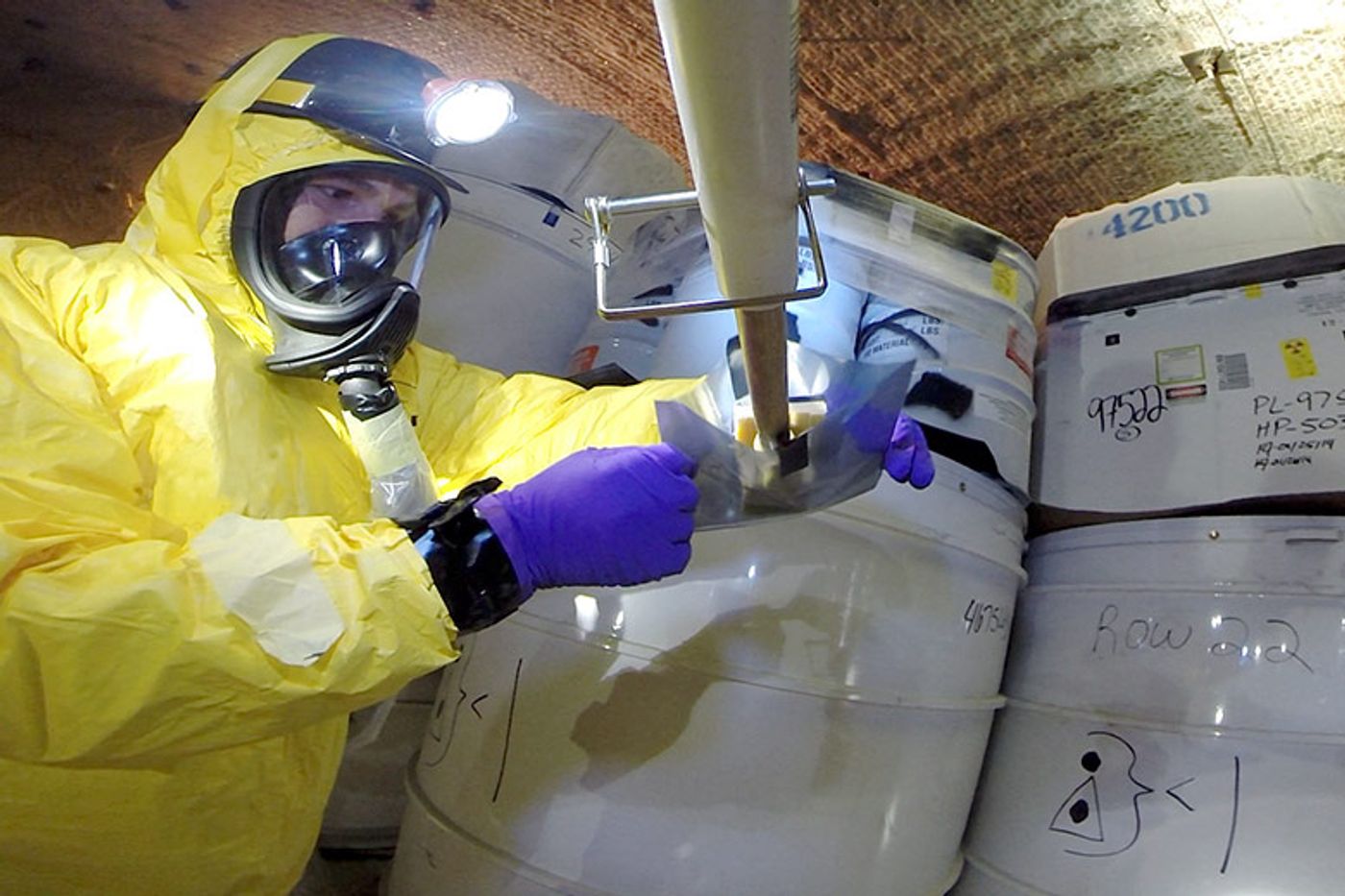The US Department of Energy’s longterm plan for dealing with material contaminated with plutonium and heavier elements from America’s weapons program is to bury it underground at the Waste Isolation Pilot Plant in southeastern New Mexico.
The goal is to safeguard nuclear material for the next 10,000 years. But three nuclear scientists point out in a new commentary article in
Nature that the Waste Isolation Pilot Plant (WIPP) was not designed to hold as much plutonium as is now being considered for disposal there. And, in fact, the site has seen two accidents in recent years.
“These accidents during the first 15 years of operation really illustrate the challenge of predicting the behavior of the repository over 10,000 years,” says Rod Ewing, professor in nuclear security at Stanford University.
What’s more, there’s more plutonium proposed for disposal at WIPP in the future, a result of treaties with the former Soviet Union and now Russia to decrease the number of nuclear weapons by dismantling them.
A recent assessment of what to do with the plutonium from dismantled weapons proposed that the material be diluted and disposed of at WIPP. But this analysis doesn’t include a revision of the safety analysis for the site, researchers say.
They’re calling on the Department of Energy, which operates WIPP, to take another look at the safety assessment of the site. Particular emphasis should be on the estimates of drilling activity in the oil-rich Permian Basin, where WIPP is located, and on the effects of such a huge increase in the plutonium inventory for the pilot plant.
“The current regulatory period of 10,000 years is short relative to the 24,100-year half-life of plutonium-239, let alone that of its decay product, uranium-235, which has a half-life of 700 million years,” they write.
“We cannot be certain that future inhabitants of the area will even know WIPP is there.” As a result, it is important to understand the impact of future drilling in the area.
The waste is stored 2,150 feet below the surface in hundreds of thousands of plastic-lined steel drums in rooms carved out of a 250-million-year-old salt bed. The repository is at about half of its planned capacity and slated to be sealed in 2033.
The researchers question some of the assumptions used in the safety studies. For example, to determine the odds of oil drilling in the future, the study uses a 100-year historical average drill rate, even though drilling has intensified in recent decades, throwing this assumption into question.
The researchers also suggest more attention be paid to how the buried materials may interact with each other, particularly with salty brine, over centuries. A single storage drum may contain a variety of materials, such as lab coats, gloves, and laboratory instruments, making for a complex chemistry.
The complacency that led to the accidents at WIPP can also occur in the safety analysis, Ewing says. Therefore, it is important to carefully review the safety analysis as new strategies for more plutonium disposal are considered.
Source:
Stanford University
This article was originally posted on
futurity.org.









